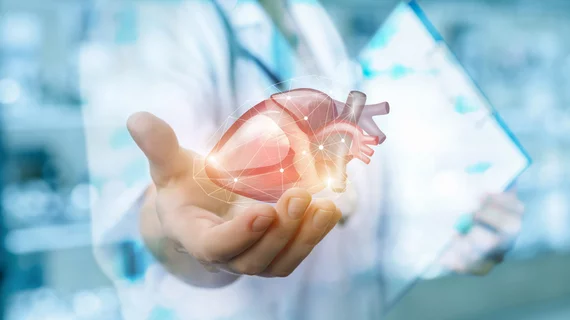Innovation in the cath lab: Cardiologists develop, perform new interventional heart procedure
Interventional cardiologists with Henry Ford Health in Detroit have developed a new coronary bypass procedure that draws inspiration from the past to meet the needs of modern heart patients.
Cardiologists William O’Neill, MD, and Khaldoon Alaswad, MD, based the new technique on surgical practices from the 1950s, when heart surgeries often consisted of two separate operations. They brought things into the 21st century, however, by making it an entirely interventional affair—no surgery required.
O’Neill and Alaswad performed the procedure on Fred Casciano, a 60-year-old patient who presented with crippling angina and a long history of heart problems, including a 98% blockage of all major coronary arteries that required quintuple bypass surgery when he was just 41 years old. The two interventional specialists created a channel between Casciano’s circumflex artery and coronary sinus, bypassing the severe blockage that had been troubling him for more than 20 years. The procedure—the very first of its kind—was a success, and Casciano was home after staying in the hospital one day for observation.
Perhaps the biggest takeaway from this newly developed technique is that it helps bring more treatment options to patients who may not be able to undergo a full surgery.
“This new procedure we specifically engineered for Fred has never been done before, but it replicates a bypass operation performed in the 1950s,” O’Neill, who serves as the director of the Henry Ford Center for Structural Heart Disease and was the first cardiologist to perform transcatheter aortic valve replacement (TAVR) in the United States, said in a prepared statement. “It opens the door for nonsurgical treatment of thousands of patients who cannot have stents or open-heart revascularization procedures.”
“It’s an exciting breakthrough that we hope will allow us to treat many more patients with this condition in the future,” added Alaswad, who serves as the medical director of Henry Ford Hospital’s cath lab.

